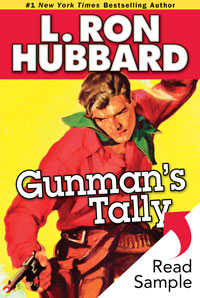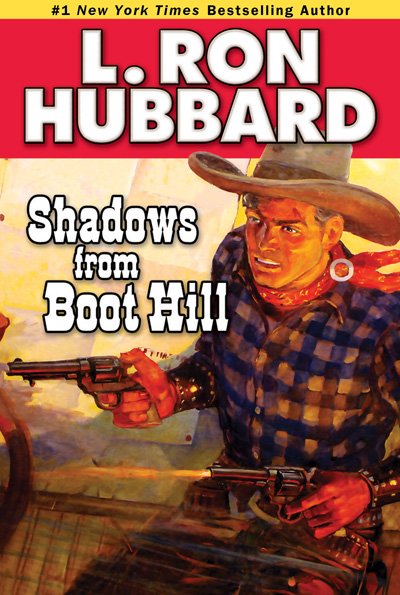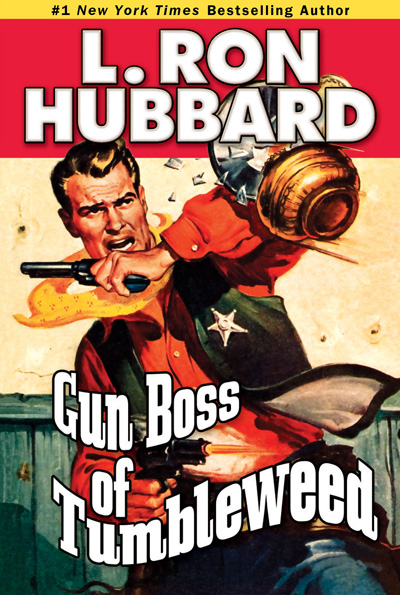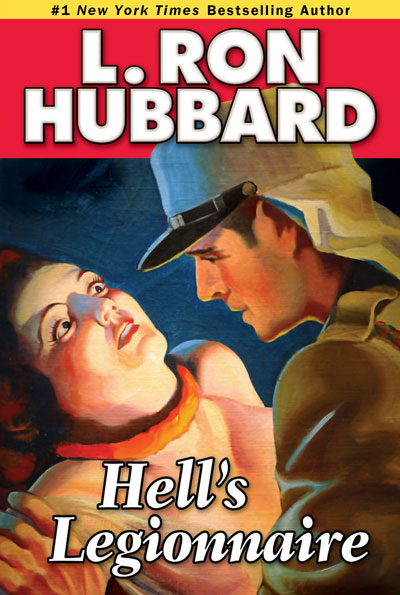Some men look to keep the peace. Others look to make trouble. But sometimes even the most law-abiding of men are compelled to cross the line.…
Easy Bill Gates is just such a man—quick with a smile and as slow to anger. He’s a model of restraint … until he’s forced to strap on a holster and kill the outlaw who murdered his brother. But more than his honor is at stake. A ruthless land baron is out to grab Bill’s ranch and he’s hired a gang of gunslingers to get Bill out of the way.
Between the rancher who wants to take his land and the young guns who want to take his life, Easy Bill will have to make some hard choices—and fast draws—to avoid becoming just another notch in the Gunman’s Tally.
Also includes the Western adventure, “Ruin at Rio Piedras,” the story of a young cowboy kicked off a ranch for falling in love with the owner’s daughter … only to devise a whip-smart plan to win the day—and the girl.
“Outstanding.” —Midwest Book Review
SAMPLE

ABOUT THE AUTHOR
Hailing from the western states of Nebraska, Oklahoma, and Montana, L. Ron Hubbard grew up surrounded by grizzled frontiersmen and leather-tough cowboys, counting a Native American medicine man as one of his closest friends. When he chose to write stories of the Old West, Hubbard didn’t have to go far to do his research, drawing on his own memories of a youth steeped in the life and legends of the American frontier.
Gunman’s Tally Glossary
Stories from the Golden Age reflect the words and expressions used in the 1930s and 1940s, adding unique flavor and authenticity to the tales. While a character’s speech may often reflect regional origins, it also can convey attitudes common in the day. So that readers can better grasp such cultural and historical terms, uncommon words or expressions of the era, the following glossary has been provided.
alkali: a powdery white mineral that salts the ground in many low places in the West. It whitens the ground where water has risen to the surface and gone back down.
ballistics expert: one who specializes in firearms. Ballistics experts are trained in and responsible for the processing of crime scenes of ballistic-related evidence: examining firearms and tool marks. Every firearm has its own particular characteristics that are carried over onto the cartridge case and the bullet during the firing process, and a ballistics expert can match a bullet that has been fired to the firearm that was used.
barrel tan: to change an animal hide into leather by soaking in a barrel containing a tanning solution.
beeves: plural of beef, an adult cow, steer or bull raised for its meat.
brand artist: a rustler, one expert at changing brands.
brimstone: “fire-and-brimstone”; threatening punishment in the hereafter.
buckboard: an open four-wheeled horse-drawn carriage with the seat or seats mounted on a flexible board between the front and rear axles.
buscadero belt: a broad belt for two guns, one on either side.
chinks: short leather chaps (leggings), usually fringed and stopping just below the knee, worn over the pants for protection.
Colt: a single-action, six-shot cylinder revolver, most commonly available in .45- or .44-caliber versions. It was first manufactured in 1873 for the Army by the Colt Firearms Company, the armory founded by American inventor Samuel Colt (1814–1862) who revolutionized the firearms industry with the invention of the revolver. The Colt, also known as the Peacemaker, was also made available to civilians. As a reliable, inexpensive and popular handgun among cowboys, it became known as the “cowboy’s gun” and a symbol of the Old West.
concha: a disk, traditionally of hammered silver and resembling a shell or flower, used as a decoration piece on belts, harnesses, etc.
Derringer: a pocket-sized, short-barreled, large-caliber pistol. Named for the US gunsmith Henry Deringer (1786–1868), who designed it.
double eagles: gold coins of the US with a denomination of twenty dollars. They were first minted in 1849. In 1850 regular production began and continued until 1933. Prior to 1850, eagles with a denomination of ten dollars were the largest denomination of US coin. Ten-dollar eagles were produced beginning in 1795 and since the twenty-dollar gold piece had twice the value of the eagle, these coins were designated “double eagles.”
dry-gulched: killed; ambushed.
dynamo: a machine by which mechanical energy is changed into electrical energy; a generator.
fanning: 1. waving or slapping the hat against a horse’s sides while riding a bucker. Using the hat in this manner serves as a balance and when a rider loses his hat, he is usually not long in following it to the ground. 2. firing a series of shots (from a single-action revolver) by holding the trigger back and successively striking the hammer to the rear with the free hand.
faro: a gambling game played with cards and popular in the American West of the nineteenth century. In faro, the players bet on the order in which the cards will be turned over by the dealer. The cards were kept in a dealing box to keep track of the play.
forty-five or .45: a six-shot, single-action, .45-caliber revolver.
G-men: government men; agents of the Federal Bureau of Investigation.
green-gilled: green around the gills; to be pale or sickly in appearance from nervousness or from being frightened.
gunhawk: a wandering gunfighter.
jingle bobs: little pear-shaped pendants hanging loosely from the end of a spur (small spiked wheel attached to the heel of a rider’s boot); their sole function is to make music.
Judge Colt: nickname for the single-action (that is, cocked by hand for each shot), six-shot Army model revolver first produced in 1873 by Colt Firearms Company, the armory founded by Samuel Colt (1814–1862). The handgun of the Old West became the instrument of both lawmaker and lawbreaker during the last twenty-five years of the nineteenth century. It soon earned various names, such as “Peacemaker,” “Equalizer,” and “Judge Colt and his jury of six.”
line camp: an outpost cabin, tent or dugout that serves as a base of operations where line riders are housed. Line riders are cowboys that follow a ranch’s fences or boundaries and maintain order along the borders of a cattleman’s property, such as looking after stock, etc.
lobo: 1. gray wolf. 2. wolf; one who is regarded as predatory, greedy and fierce.
locoweed: any of a number of plants widespread in the mountains of the Western US that make livestock act crazy when they eat them.
neck-reined: guided a horse by pressure of the reins against its neck.
owl-hoot: 1. outlaw. 2. owl-hoot trail; an outlaw’s way of life.
Piedmont: a type of horse bred in the Piedmont region, an area of land lying between the Appalachian Mountains and the Atlantic coast.
puncher: a hired hand who tends cattle and performs other duties on horseback.
quirt: a riding whip with a short handle and a braided leather lash.
rannies: ranahans; cowboys or top ranch hands.
rowels: the small spiked revolving wheels on the ends of spurs, which are attached to the heels of a rider’s boots and used to nudge a horse into going faster.
scatter-gun: a cowboy’s name for a shotgun.
Scheherazade: the female narrator of The Arabian Nights, who during one thousand and one adventurous nights saved her life by entertaining her husband, the king, with stories.
Sharps: any of several models of firearms devised by Christian Sharps and produced by the Sharps Rifle Company until 1881. The most popular Sharps were “Old Reliable,” the cavalry carbine, and the heavy-caliber, single-shot buffalo-hunting rifle. Because of its low muzzle velocity, this gun was said to “fire today, kill tomorrow.”
slouch hat: a wide-brimmed felt hat with a chinstrap.
stamping mill: a machine that crushes ore.
Stetson: as the most popular broad-brimmed hat in the West, it became the generic name for hat. John B. Stetson was a master hat maker and founder of the company that has been making Stetsons since 1865. Not only can the Stetson stand up to a terrific amount of beating, the cowboy’s hat has more different uses than any other garment he wears. It keeps the sun out of the eyes and off the neck; it serves as an umbrella; it makes a great fan, which sometimes is needed when building a fire or shunting cattle about; the brim serves as a cup to water oneself, or as a bucket to water the horse or put out the fire.
string: a group of animals, especially saddle horses, owned or used by one person.
vaquero: (Spanish) a cowboy or herdsman.
varmints: those people who are obnoxious or make trouble.
war bag: war sack; a cowboy’s bag for his personal possessions, plunder, cartridges, etc. Often made of canvas but sometimes just a flour or grain sack and usually tied behind the saddle.
Winchester: an early family of repeating rifles; a single-barreled rifle containing multiple rounds of ammunition. Manufactured by the Winchester Repeating Arms Company, it was widely used in the US during the latter half of the nineteenth century. The 1873 model is often called “the gun that won the West” for its immense popularity at that time, as well as its use in fictional Westerns.
wind devil: a spinning column of air that moves across the landscape and picks up loose dust. It looks like a miniature tornado but is not as powerful.
wrangler: a cowboy who takes care of the saddle horses.
yap: a stupid, crude or loud person.












